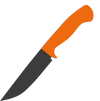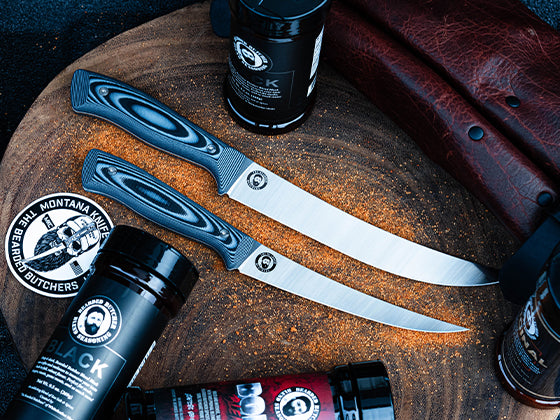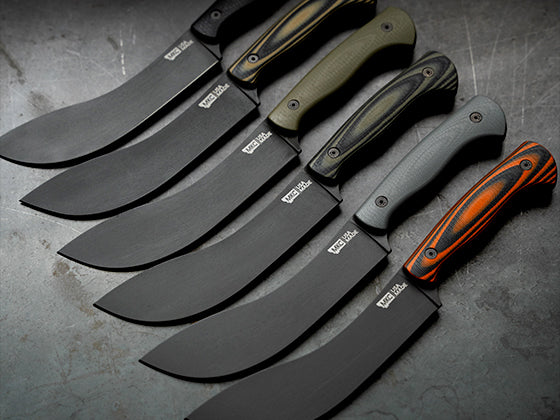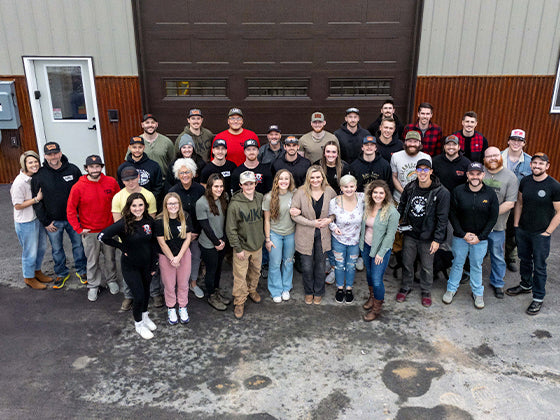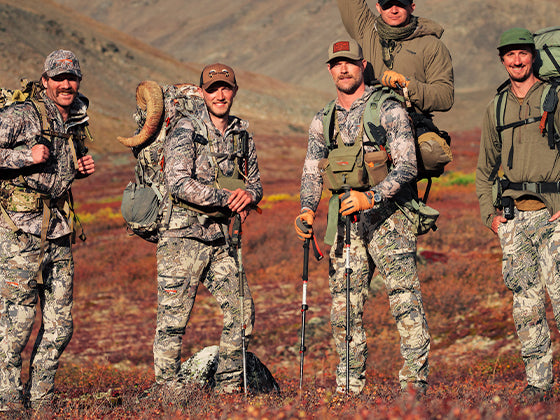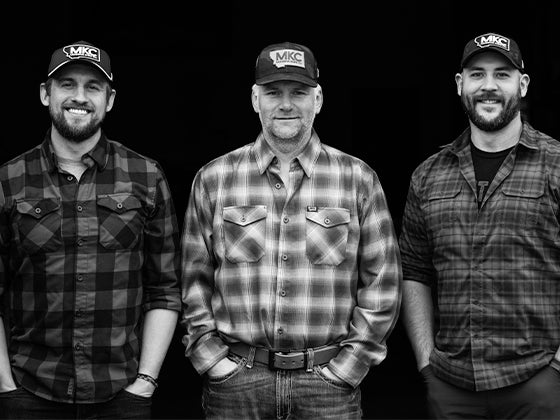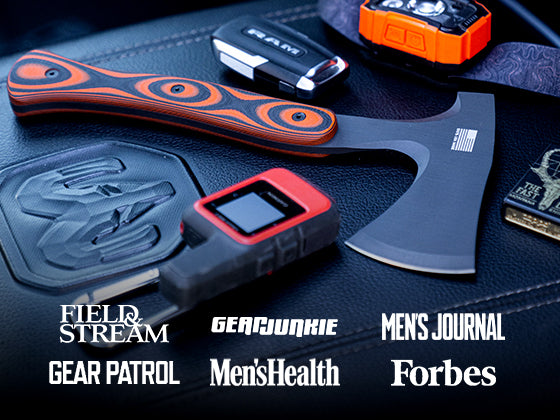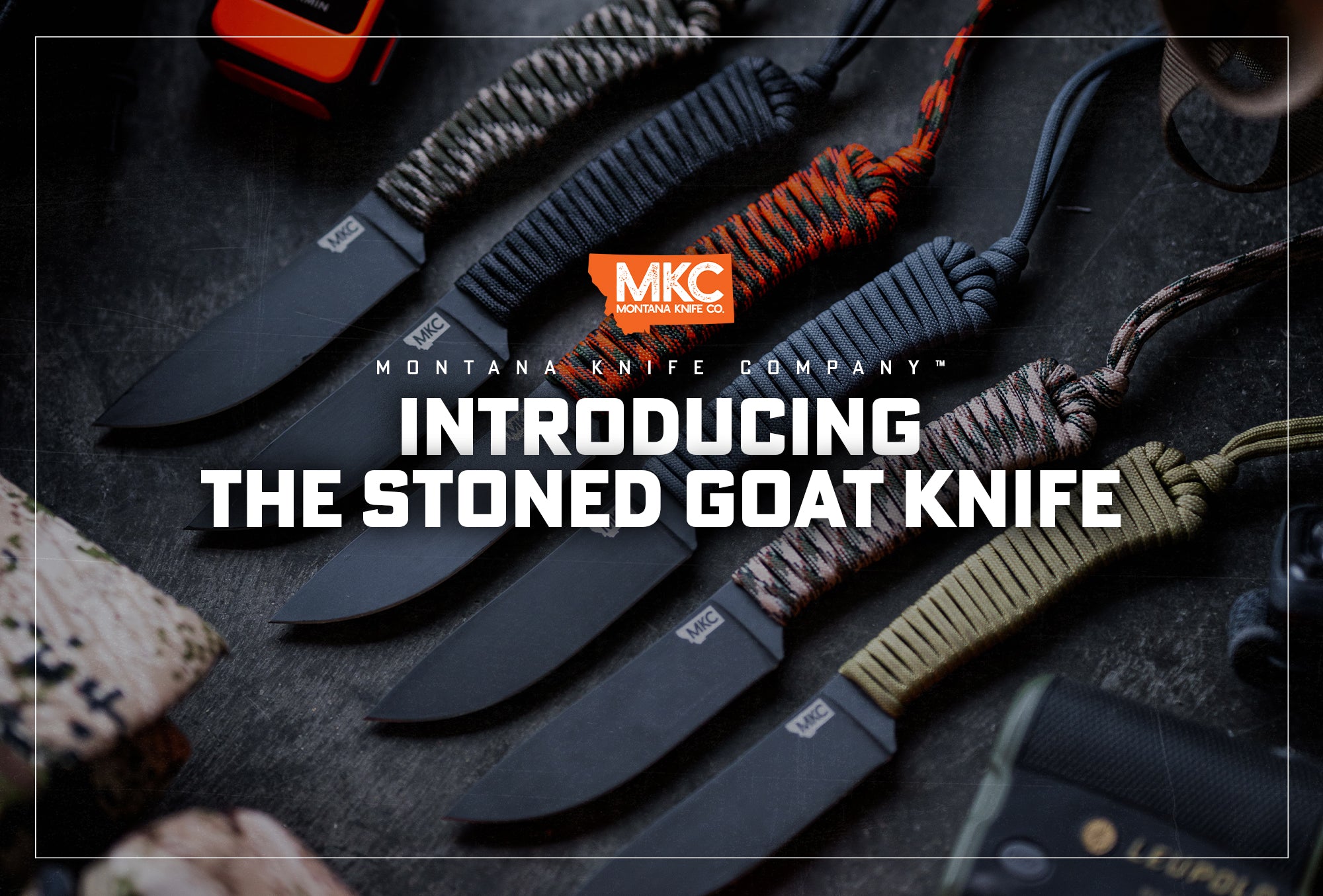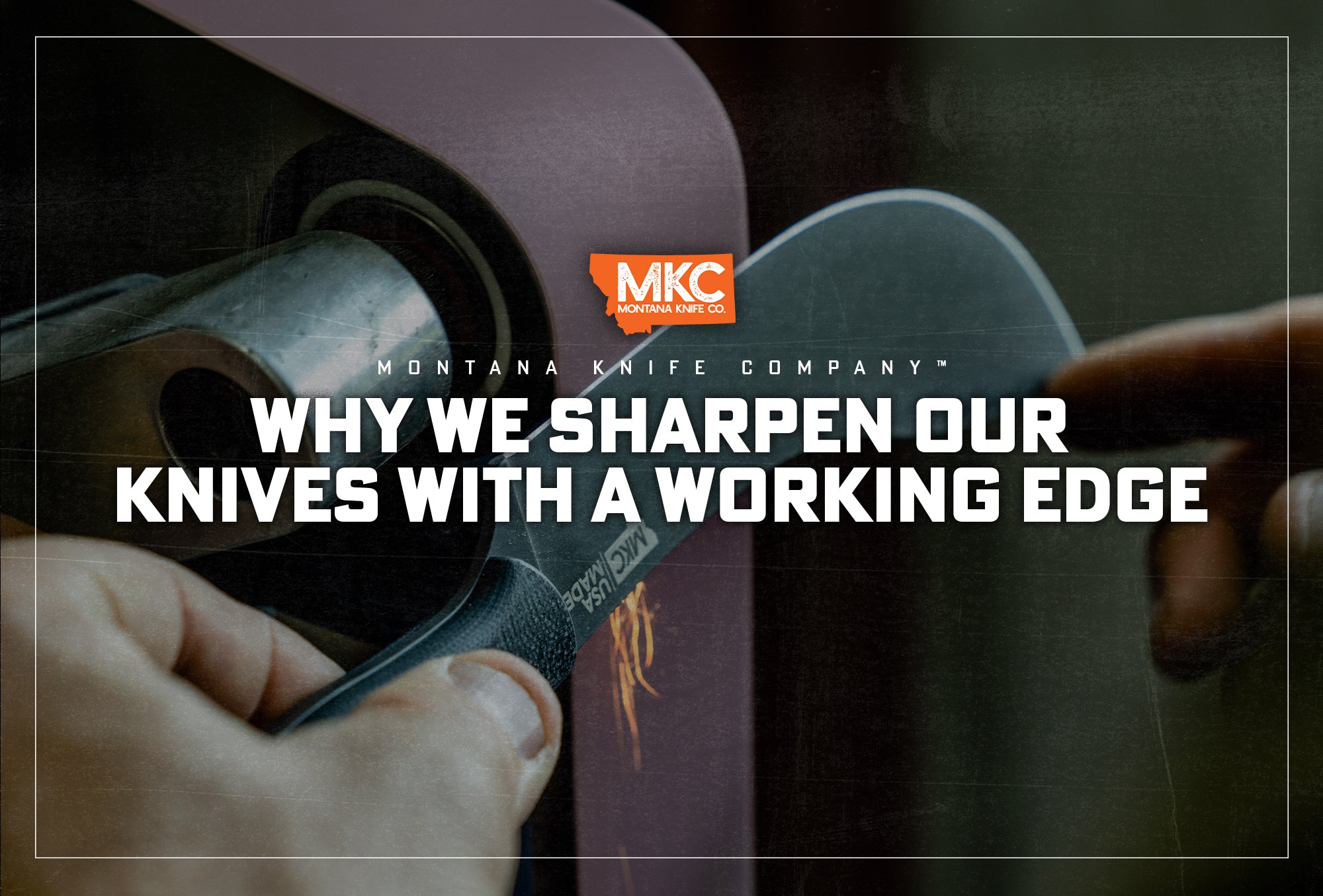There are tons of hunters and hikers who count every single ounce they carry — at times, I’ve been one of them.
They’ll cut the handle off their spoon. They’ll cut the handle off their toothbrush. They’re constantly looking for the lightest-weight pack possible. But too often, this forces them to make compromises that can leave them underprepared in the field.
That’s why we made the Speedgoat. Our goal was to create a fixed-blade, ultralight knife that can still perform hard work and help in a life-threatening situation. It’s truly the best knife for backpacking.
Why the Speedgoat Is the Best Knife for Backpacking
An ultralight backpacking knife is designed to be as physically light as possible. You can identify it by the holes in the blade, drilled to reduce weight. Additionally, ultralight knives have smaller handles, also to reduce weight, which often come at the cost of reduced comfort in the hand.
But the MKC Speedgoat isn’t just another ultralight knife. It’s wrapped in paracord, which solves the problem of reduced comfort in the hand and provides for countless other uses, from replacing a busted boot lace to hanging meat, all in an ultralight package.
But most importantly, the fixed-blade Speedgoat is strong enough and sizable enough to do hard work, like caping out a deer or an entire elk. That’s where it stands apart from knives that claim to be “ultralight,” but aren’t all that useful.
What to Look for When Buying an Ultralight Knife

Looking for the perfect ultralight backpacking knife to take on your next trip? Here are a few features to keep in mind.
Strength
Regardless of weight, any knife must first and foremost be strong, resilient, and useful. Some lightweight knives have replaceable blades. Sure, they’re lightweight, but any kind of hard work is going to make that blade snap.
With the Speedgoat, we went as thin as we could without compromising the strength and performance of the blade.
Size
Size is important, but strength is even more so, which is why I always recommend carrying a fixed blade. If you need to pry something or do anything that requires pushing down on a material, you want that blade to be strong.
To reduce size, people often choose knives with a folder mechanism. But even the greatest folder mechanism can fail. One loose screw can cause a huge problem.
Ultimately, what kind of ultralight knife you carry is a question of what kind of backpacking you’re doing and what you might come across. After all, no two backpackers are the same. Some might shoot a picture at the end of their hike. Others might shoot a moose.
Regardless, it’s important to carry a knife of adequate strength and size. If you’re counting every ounce or just need an ultralight, everyday carry, the Mini-Speedgoat is an excellent, bare minimum option with a fixed blade at 2.75 inches.
Sheath
This is the most overlooked — and most lifesaving — feature. A knife should have a carry system that makes it accessible at all times in case of an emergency.
Ultralight knives are often foldable, easy to stow in pockets or packs. But if something goes wrong and catches you off guard, you won’t have time to fish around in your pack. At that moment, you won’t care how much your knife weighs. You’ll just want to reach it.
I’m reminded of the story of Aron Ralston, who had to cut his own arm off because a boulder pinned his hand. That’s clearly an extreme circumstance, but there are less extreme situations hikers — particularly female hikers — can find themselves in every single day that call for a handy knife.
Select for Weight and Function
When you’re looking for an ultralight backpacking knife, make sure to choose one that’s light, but also strong, accessible, and dependable. If an ultralight knife doesn’t meet those standards, then it can’t do its job — which means those extra ounces in your pack are going to waste anyway.
by Josh Smith, Master Bladesmith and Founder of Montana Knife Company














